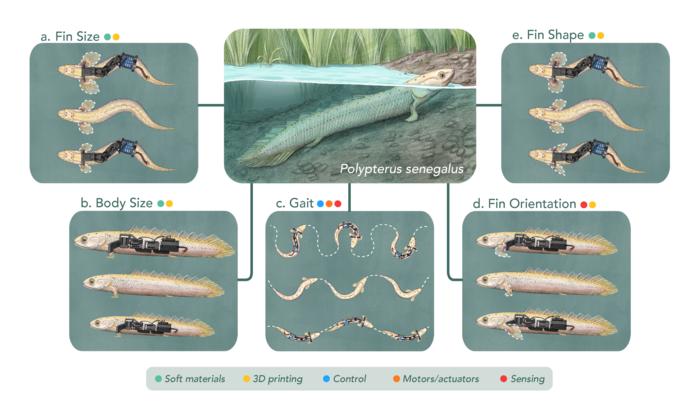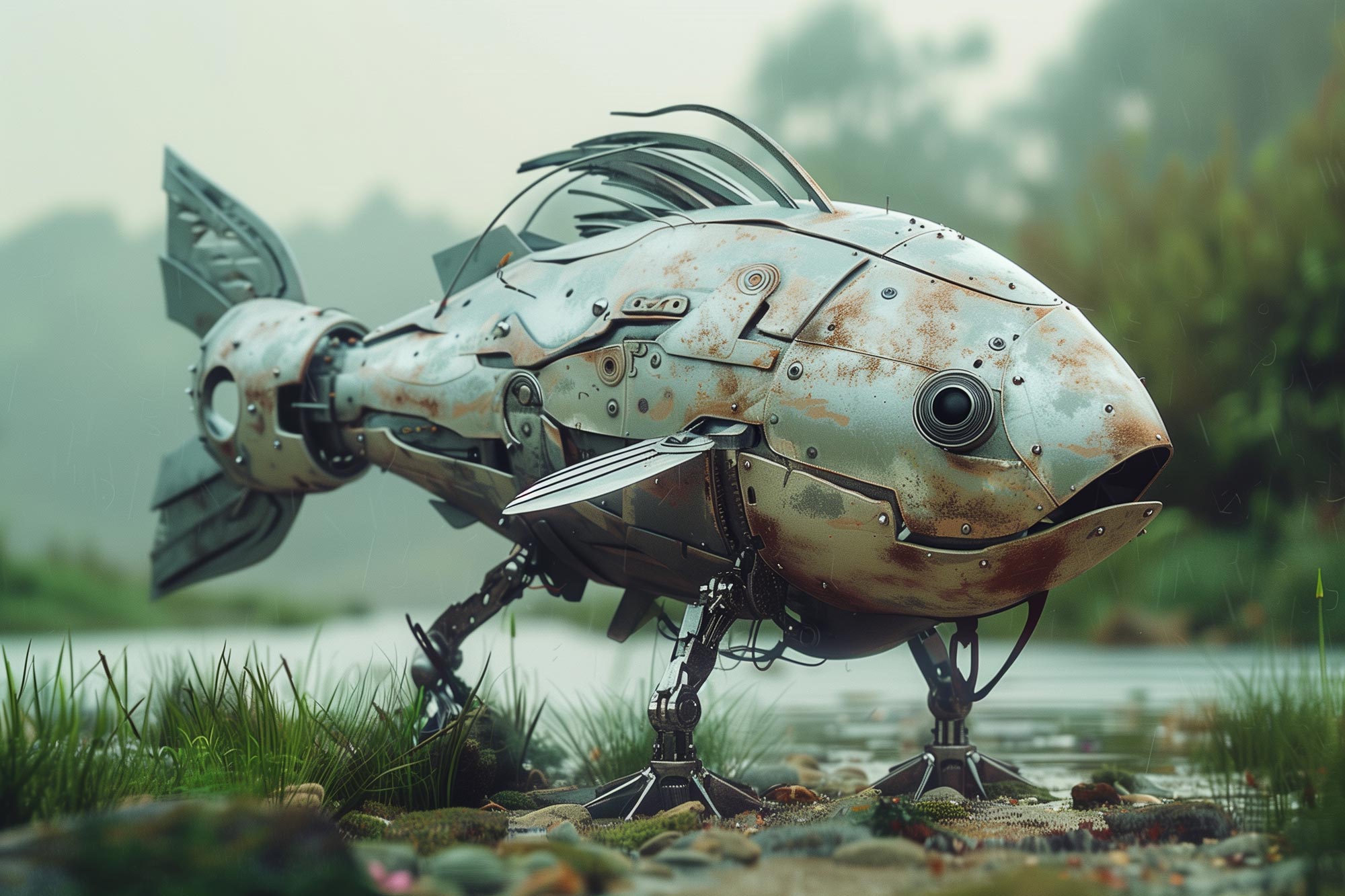Scientists are working to bring extinct animals to life through paleo-inspired robotics. By constructing robotic versions of long-extinct species, researchers plan to simulate millions of years of evolutionary progress in a single day.

Also Read: Scientists Discover Animal Ecosystem Thriving Beneath the Seafloor
Paleo-inspired robotics is an innovative field where robotics and paleontology merge to bring extinct animals back to life in mechanical form. This method utilizes modern engineering, coding and robotics to recreate entire bodies of ancient species based on fossil records.
The aim is to simulate how these animals moved, behaved and adapted to their environments over millions of years of evolution.
Dr. Michael Ishida from the University of Cambridge is one of the figures in the field of paleo-inspired robotics. His team is working on creating robots modeled after extinct species like mudskippers and other fish.
These robots help researchers study evolutionary transitions like the shift from aquatic to terrestrial life. Ishida explains that with just a few lines of code or a new 3D-printed part, they can simulate evolutionary changes that would take millions of years in nature.
One of the primary goals of paleo-inspired robotics is to study major evolutionary transitions. For instance, researchers are investigating how vertebrates evolved from living in water to living on land.
By building robots that mimic the anatomy and movement of ancient species like the mudskipper, scientists can better understand the evolutionary pressures that led to such transitions.
Researchers analyze fossilized remains of extinct animals to gather information about their skeletal structure, muscle attachments and potential movement patterns.
Using this data, engineers design robots that replicate the anatomy and biomechanics of these creatures. For example, they might 3D-print limbs or create joints that mimic how an animal’s body might have functioned.
Scientists then write code that dictates how these robots move, simulating how the extinct animals walked, swam or flew.
Once built, these paleo-inspired robots are tested in environments that resemble those in which the original species lived. This allows researchers to observe how the creatures might have navigated different terrains or interacted with their surroundings.
Robots can be placed in actual environments whether it’s sandy, rocky or underwater allowing researchers to observe how the creature might have moved and adapted to different conditions.
This type of analysis is difficult to replicate in a virtual simulation. Robots provide a physical model that can more accurately reflect the limitations and capabilities of an extinct species’ anatomy.
Computer simulations can sometimes oversimplify these complex interactions. In paleo-inspired robotics, robots can interact with their surroundings.
One of the aspects of paleo-inspired robotics is its ability to condense millions of years of evolutionary history into a single engineering experiment.
As Dr. Ishida noted with just a small amount of code or a 3D-printed part, researchers can test hypotheses about how certain anatomical features evolved. For example, building a robot that mimics the transition from fins to legs can reveal much about how early fish evolved into land-dwelling animals.
Also Read: Boeing Satellite News: Explosion of Boeing-Made Satellite Intelsat 33e
Paleo-inspired robotics combines the principles of paleontology, biology and robotics to replicate extinct species’ anatomy and movement.
These robots interact with real-world physics, giving researchers a tangible way to test theories about locomotion.
By creating robotic analogs of ancient fish, complete with mechanical joints that mimic muscles and ligaments, researchers can experiment with different walking patterns and study the mechanics of how these early creatures may have moved.
This method offers a new lens through which to understand ancient life. According to Dr. Michael Ishida, the lead author from Cambridge’s Department of Engineering, robots can fill the research gaps that fossils cannot.
The study of modern-day walking fish such as mudskippers, serves as a foundation for developing paleo-inspired robotics. These living fish can move on land using their fins.
By observing these species, scientists can apply their movement patterns to robots, simulating how extinct species might have moved.
The team also draws inspiration from fossils of ancient fish to design robots that replicate their anatomy. This combination of modern biological observations and fossil data enables a more accurate reconstruction of early land locomotion.
The collaboration between roboticists, paleontologists and biologists is essential for the success of paleo-inspired robotics. Each field brings insights that complement one another.
Paleontologists analyze fossils, biologists study living organisms and roboticists use their expertise to create robots that replicate ancient anatomy and movement.
This interdisciplinary approach enriches the understanding of evolutionary biology by providing a more picture of how early vertebrates evolved. It also opens up new avenues of collaboration between engineers and researchers in various fields.
One of the aspects of paleo-inspired robotics is the creation of robotic models that mimic the skeletal structure of ancient fish. These robots are equipped with mechanical joints that replicate the muscles and ligaments of extinct species.
Once built, the robots will be used to conduct experiments that test how these creatures might have moved and how efficient their locomotion was.
Researchers are interested in questions such as how much energy different walking patterns required and which movements were most effective for transitioning from water to land.
Also Read: Richard Branson News: Richard Branson to Co-Pilot Space Balloon





